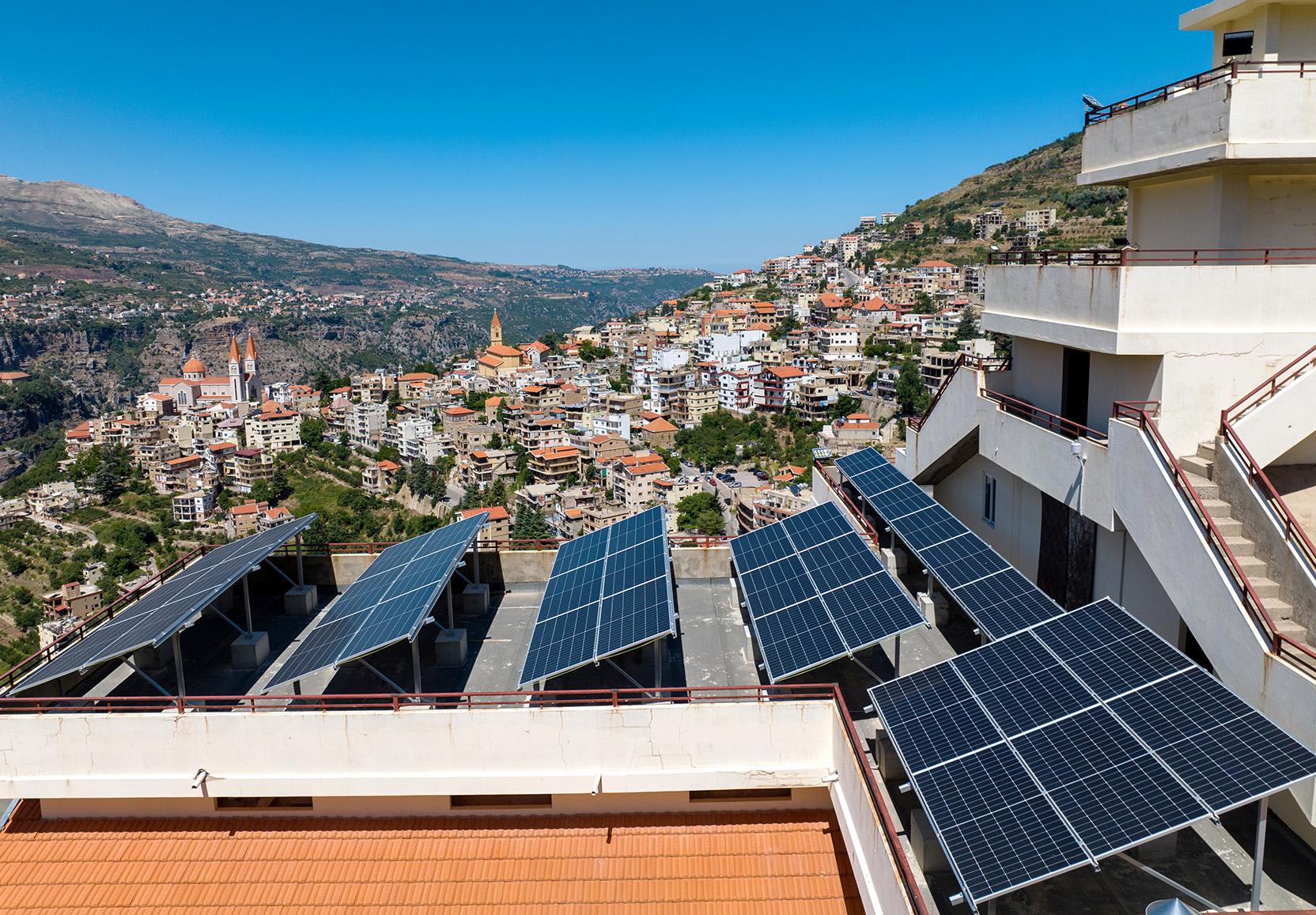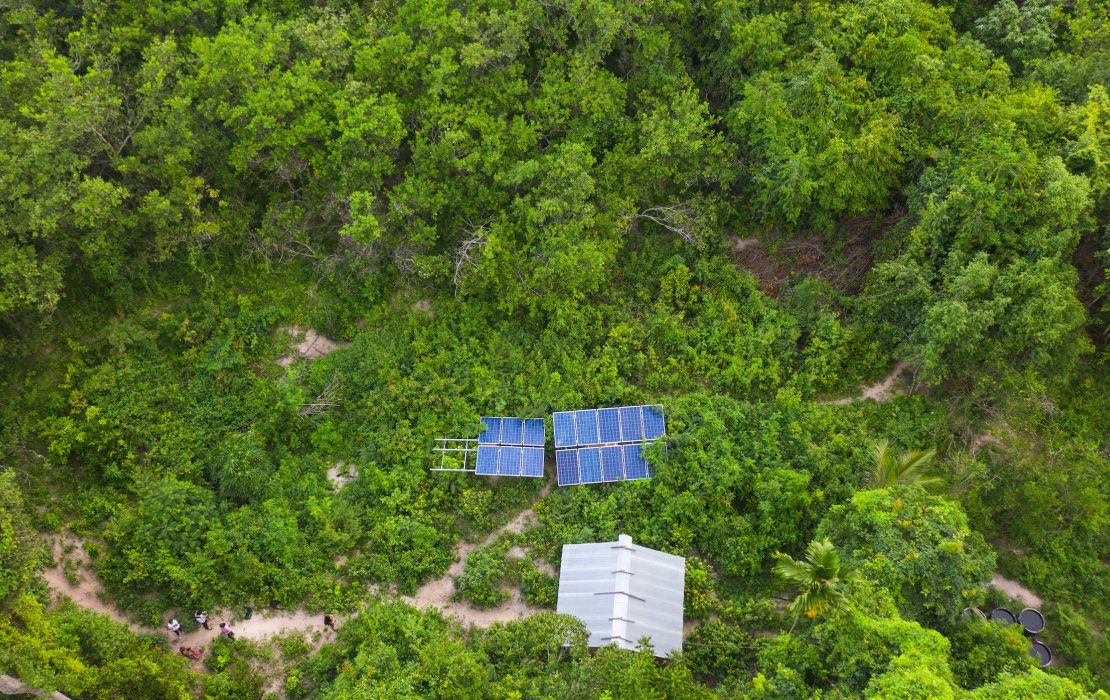
Solar photovoltaic systems on roofs in Lebanon. Photo: Fouad Choufany / UNDP Lebanon
This year marked the hottest summer on record. Already, the World Meteorological Organization just announced 2023 as the warmest year on record – with major impacts. This confirms a worrisome transition from the 'global warming' era to what the UN Secretary-General, Antonio Guterres, referred to as the start of the 'global boiling' era. As a result, the sweltering summer heat witnessed across most of Europe heightens concerns by governments over energy security.
Unfortunately, this trend is likely to become the norm, rather than the exception, given the now frequent and repetitive cycle - from record-breaking hot temperatures in summers to biting, frosty winters. Although accurate statistics on casualties from the heatwaves remain hazy, it is estimated that extreme weather events such as storms, heatwaves, and flooding accounted for 85,000 to 145,000 human fatalities across Europe, over the past 40 years – 85 percent of which is attributed to heatwaves. Figure 1 illustrates the increase in temperature experienced by the 30 warmest summers. Not surprisingly, governments are investing, even more now, to guarantee cooling, and as the El Niño winter season starts many are stocking their energy reserves in anticipation of a wet, snowy, and cold winter season.
“ The June-July-August (JJA) season for 2023 was the warmest on record globally by a large margin, with an average temperature of 16.77C, 0.66C above average ”
Warmest summers on record

Figure 1: Global-mean surface air temperatures for the 30 warmest summers. Source: EU’s Copernicus Climate Change Service.
Consequently, with rising cooling and heating needs, improving the energy efficiency of buildings is gaining increasing importance for many countries. A recent move by the EU Parliament to pass the new Energy Efficiency Directive significantly raises Europe’s energy efficiency ambition, with legally binding compliance requirements to member states. For Europe, this is strategic, as at 28 percent, households are the second largest energy consumers after the transport sector at 29 percent.
We share below six lessons on achieving future-smart energy efficient buildings from UNDP’s Knowledge Symposium on Energy Efficiency in Buildings in the Western Balkans.
1. Enact clear rules, regulations, policies and standards.
Having well-defined regulations, standards, policies and guidelines that define the concept of Nearly/Net-Zero Energy Buildings (NZEB) makes it easier for both the private and public sectors to know how to improve energy efficiency in buildings. Government agencies also need to ensure that construction companies follow these rules (enforcement and compliance) in water heating, air conditioning and lighting. One innovation in this area is the use of Energy Efficiency Licenses by the Government of Serbia, which is part of new changes to the building law. The use of National Cooling Action Plans is also an important instrument for promoting sustainable and smart cooling in countries.
2. Promote the use of economic incentives to advance energy efficiency in buildings.
Leveraging private sector investment in putting up NZEB, sometimes using economic incentives, can have a catalytic effect. For instance, the Kosovo region has clearly defined NZEB in its laws and regulations, providing regulatory clarity that can incentivize private sector engagement and investment in this area.
3. Apply innovative digital technology to scale up energy efficiency.
Digitalization holds the potential to accelerate decarbonization efforts. Using an Energy Management Information System (EMIS) – a software, technology or system that monitors, analyzes and controls a building’s energy use and system performance - is a growing good practice. Such a system can leverage smart systems with artificial intelligence (AI) capabilities for lighting, heating, cooling, and indoor and outdoor security systems. Naturally, such systems automatically collect data to guide future decision-making. The use of EMIS as an interesting innovation has been supported by UNDP countries such as Bosnia and Herzegovina, Croatia, Moldova, and Serbia.
4. Use data to scale up energy efficiency in buildings.
Digital technology can help mine important data on energy consumption patterns to influence decision-making. Investing in energy-efficient systems may have significant upfront costs, but long-term savings and added benefits, such as improved health and well-being, make a compelling case for their adoption. In Moldova specifically, data collected in public institutions will improve understanding of the real consumption of energy and inform solutions that generate savings and alleviate financial pressure on these institutions.
5. Remove financial barriers to boost private sector involvement.
Eliminating financial barriers encourages private sector investments and draws in the funding needed to construct new energy-efficient buildings and improve on existing ones through retrofitting and refurbishment. For instance, this can attract Energy Saving Companies (ESCOs) that invest in viable energy-efficient projects and ultimately recover their investments from the energy savings achieved in the long-term. With UNDP support, Ukraine has mapped out some interesting strategic ESCO market energy efficiency best practices for public buildings.
6. Influence behavioral change, to drive change.
Achieving ambitious net-zero emissions by 2050 depends largely on influencing changes in human behavior. Equally, reducing energy consumption in buildings requires a major shift in how people and institutions use energy. The OECD has identified some key barriers to behavioral change (norms, status quo bias, intention-action gaps, etc.) and offers some useful recommendations on strategies for inducing sustainable change through targeted public engagements and information sensitization campaigns, among others.
Future energy efficient buildings are possible.
In this highly uncertain 'global boiling’ era, UNDP is supporting countries through practical policy measures for energy efficiency in buildings. These include minimum energy performance standards, certification and labelling of electrical appliances in Cambodia, Kenya, Kazakhstan, Tanzania and Turkey, to name a few. UNDP is also supporting the adoption of smart buildings and facilities across many sectors including health. More such actions are needed to achieve future smart energy-efficient buildings, which not only save energy and money but would greatly catalyze decarbonization efforts as expected by the Paris Agreement.

